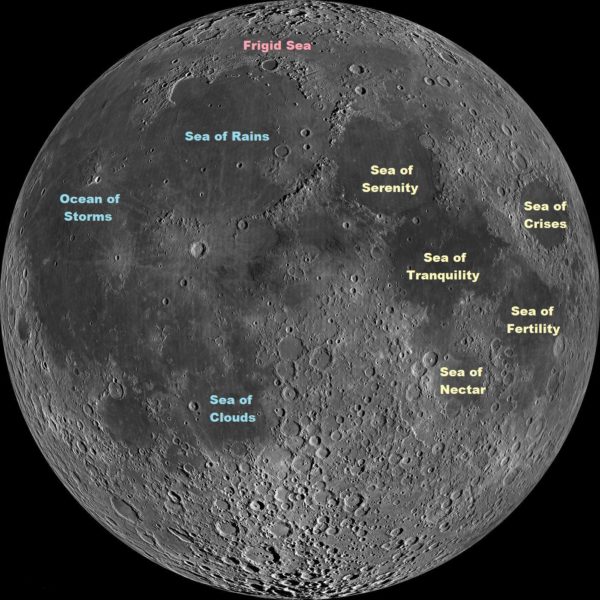"From out there on the moon, international politics look so petty. You want to grab a politician by the scruff of the neck and drag him a quarter of a million miles out and say, 'Look at that, you son of a bitch.'" -Edgar Mitchell, Apollo astronaut
The full Moon of November 14th may be special for being the closest, brightest full Moon in over 60 years, but every full Moon is full of delightful sights. There’s science behind it, too; much of what you can see even with the naked eye is evidence of our nearest neighboring world’s unique geological history.
 The maria -- or seas -- of the Moon's surface visible on the near site. The sea of tranquility (Mare Tranquillitas) was the site of Apollo 11's landing. Image credit: NASA/GSFC/Arizona State University, annotations by Stardate / The University of Texas McDonald Observatory.
The maria -- or seas -- of the Moon's surface visible on the near site. The sea of tranquility (Mare Tranquillitas) was the site of Apollo 11's landing. Image credit: NASA/GSFC/Arizona State University, annotations by Stardate / The University of Texas McDonald Observatory.
The dark maria are a result of basaltic lava flows, with the largest one covering more than 10% of the lunar surface. There are craters visible with the naked eye, including two spectacular ones. And many of the most prominent features contain the historic Apollo landing sites.


Thanks much for this post. Mere hype or not, the 'supermoon' provides a good excuse to take a few moments outside, just simply looking. And now I'm going to point out to my son where humans first walked on the moon.
I will add one more feature that may be of interest to any kid who has been to the Air and Space museum and touched the moon rock there. That moon rock came from the SE edge of the Sea of Serenity, basically that hilly bump right where it touches the northern most part of the Sea of Tranquility.